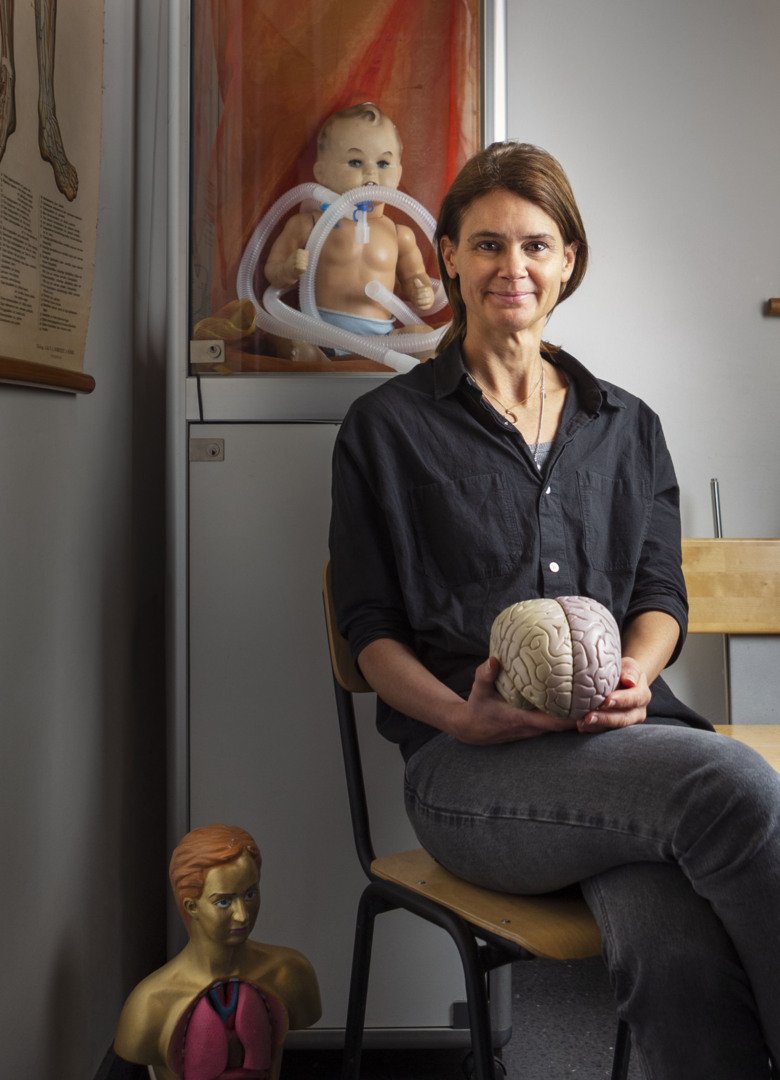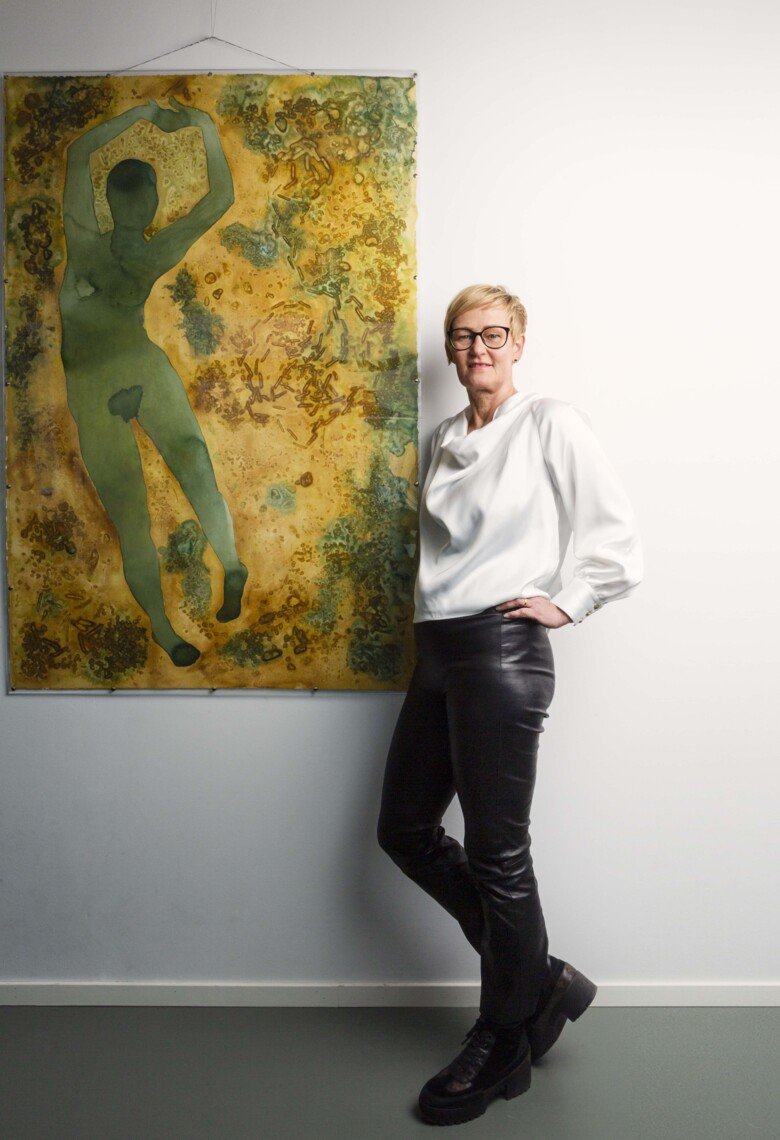Bringing art and science together
A watercolour painting, anatomical artwork or a whole house dedicated to the body. When scientists turn to art, science takes on new forms.
Text: Cecilia Odlind (in translation from Swedish) for the magazine Medicinsk Vetenskap issue nr 2, 2023
“Both the scientist and the artist explore our world”
Name: Eva Åhrén
Title: Director of Karolinska Institutet’s Unit for Medical History and Heritage, including the Hagströmer Library, and researcher in History of Medicine and Science.
Research on: How anatomy researchers in the 19th and early 20th centuries worked with imaging.

“In the 19th and early 20th centuries, anatomy was an important and influential research subject. Research was back then about being able to see and visualize new structures in the body, and images were part of the proof of new discoveries. And then imaging became a crucial tool. Some researchers collaborated with artists and others became skilled artists themselves. One example is Santiago Ramón y Cajal, a Spanish Professor of Anatomy who was also an accomplished illustrator. He developed methods to examine and visualize the three-dimensional structure of neurons in the brain and was awarded the Nobel Prize in Physiology or Medicine in 1906.
In my own research, I am trying to elucidate the role images played in the development of knowledge about human and animal anatomy. It is inspiring and fun to align our knowledge with older ways of thinking, to be in close contact with historical books, objects and pictures. And it is necessary in order to understand our history, and without this understanding we cannot make wise decisions about the future. It is therefore important to preserve and make available the Hagströmer Library of Medical History and its collections.
Imaging is still an essential part of scientific research and communication. Artists and scientists may have different motivations but there are also similarities: Both explore our world and our place in it. A dedicated scientist, like a dedicated artist, investigate an issue and then returns and communicates it to others.”
“Both hemispheres of the brain should be stimulated”
Name: Anna Nordlander
Title: Researcher at the Department of Laboratory Medicine, Karolinska Institutet and Infectious Disease Physician at Karolinska University Hospital. Initiator and co-founder of Kroppens Hus (House of the Body).
Research on: Cell therapy against viral infections in stem cell transplant recipients.

“As a doctor and researcher, I have often been asked by family and friends about diseases and how the body works. At the same time, I have felt frustrated that we, doctors and researchers, only start after the problems emerge, we rarely do preventative work. I thought that more knowledge about how to take care of your health could be very useful and came up with the idea of Kroppens Hus.
It brings together curious children and poets, patients, actors, doctors, scientists and artists to converse and create. I believe that if you are affected in such a way that you can feel in your heart or guts - then you want to know more. Art can help open the senses to those feelings, which in turn allows for engaging conversations about the body. I also believe that creativity and interactivity provide more lasting knowledge. For example, we organise live talks with scientists, a medical art workshop where you can create body-related artwork, and we collaborate with Svärmen to stage a mobile theatre about eternal life. We have also created interactive art installations that encourage conversation and thought.
Research, like art, is stimulated by curiosity and is also a creative activity. However, much knowledge and emerging research results do not reach beyond the scientific community. Art allows us to communicate about medicine, health and research findings in a more accessible and enjoyable way. These are two worlds that do not often come together. We want to create a fun, inspiring, open environment without too much direction. Both hemispheres of the brain should be stimulated!”
Watch out!
Visit Kroppens Hus at Stadsgårdskajen in Stockholm Open Saturdays and Sundays until June 30.
“Painting gives me new perspectives on science”
Name: Ina Schuppe Koistinen
Title: Associate Professor at the Department of Microbiology, Tumour and Cell Biology, Karolinska Institutet. Watercolour artist.
Research on: The role of the microbiota in women's health and fertility. Follow FemBiome on Instagram.

“I have always painted. As a PhD student, I worked with microscopy, spending many hours looking at beautiful fluorescent cells and that is when I was inspired to start painting scientific images. Since then, I have often painted things I am researching, such as pregnancy and foetuses or different cell types. Our lab is now starting to look like an art gallery and we use my paintings in lectures, on social media and in the recruitment of patients.
For me, painting is an alternative way to focus on current research issues. The image becomes an interpretation of the subject, I ask myself what is important, what I want to convey and it also helps me in the scientific thought process. Often I place the picture on the floor and ponder about it, asking myself what is great and what is poor. I then bring this way of thinking into scientific work where we also need to look at data from different perspectives.
But the most rewarding thing about painting is the sense of flow, when you become so absorbed in what you are doing that you forget about time and space. I can also experience this creative lightness in my work as a researcher, but it is much more rare. Research is more long-term; you have to be patient before you see the results. When painting, the results are immediately visible. It is also fantastic to just disconnect your brain and let your inspiration and hands work. The studio becomes a refuge where problems and worries do not get in.”
